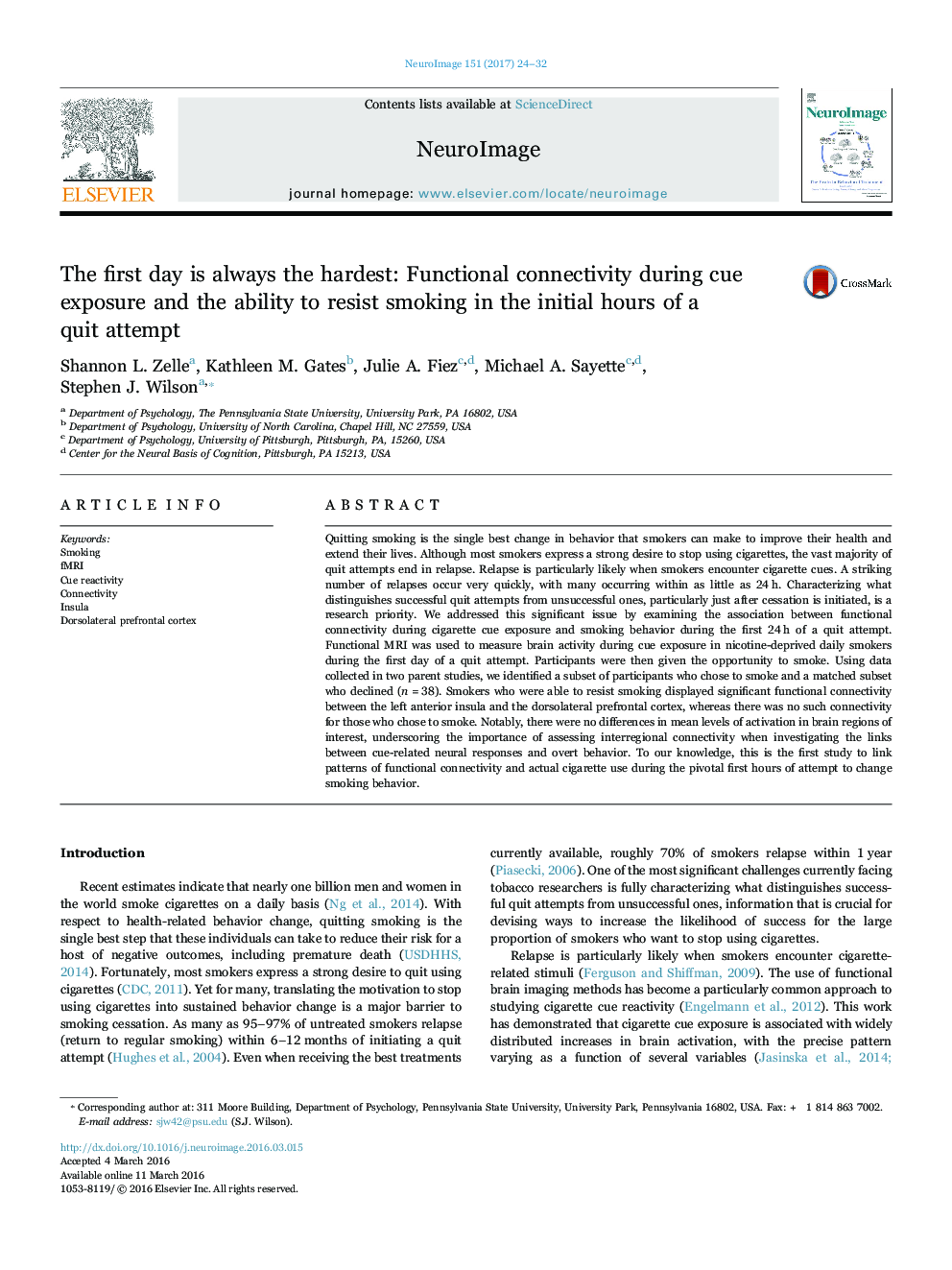| کد مقاله | کد نشریه | سال انتشار | مقاله انگلیسی | نسخه تمام متن |
|---|---|---|---|---|
| 5630879 | 1580859 | 2017 | 9 صفحه PDF | دانلود رایگان |
- Lapse in first day of quit attempt is predicted by cue-related brain connectivity.
- Only those resisting smoking had connectivity between insula and dorsolateral PFC.
- Extend prior findings by highlighting insula's role during early behavior change.
Quitting smoking is the single best change in behavior that smokers can make to improve their health and extend their lives. Although most smokers express a strong desire to stop using cigarettes, the vast majority of quit attempts end in relapse. Relapse is particularly likely when smokers encounter cigarette cues. A striking number of relapses occur very quickly, with many occurring within as little as 24 h. Characterizing what distinguishes successful quit attempts from unsuccessful ones, particularly just after cessation is initiated, is a research priority. We addressed this significant issue by examining the association between functional connectivity during cigarette cue exposure and smoking behavior during the first 24 h of a quit attempt. Functional MRI was used to measure brain activity during cue exposure in nicotine-deprived daily smokers during the first day of a quit attempt. Participants were then given the opportunity to smoke. Using data collected in two parent studies, we identified a subset of participants who chose to smoke and a matched subset who declined (n = 38). Smokers who were able to resist smoking displayed significant functional connectivity between the left anterior insula and the dorsolateral prefrontal cortex, whereas there was no such connectivity for those who chose to smoke. Notably, there were no differences in mean levels of activation in brain regions of interest, underscoring the importance of assessing interregional connectivity when investigating the links between cue-related neural responses and overt behavior. To our knowledge, this is the first study to link patterns of functional connectivity and actual cigarette use during the pivotal first hours of attempt to change smoking behavior.
Journal: NeuroImage - Volume 151, 1 May 2017, Pages 24-32
